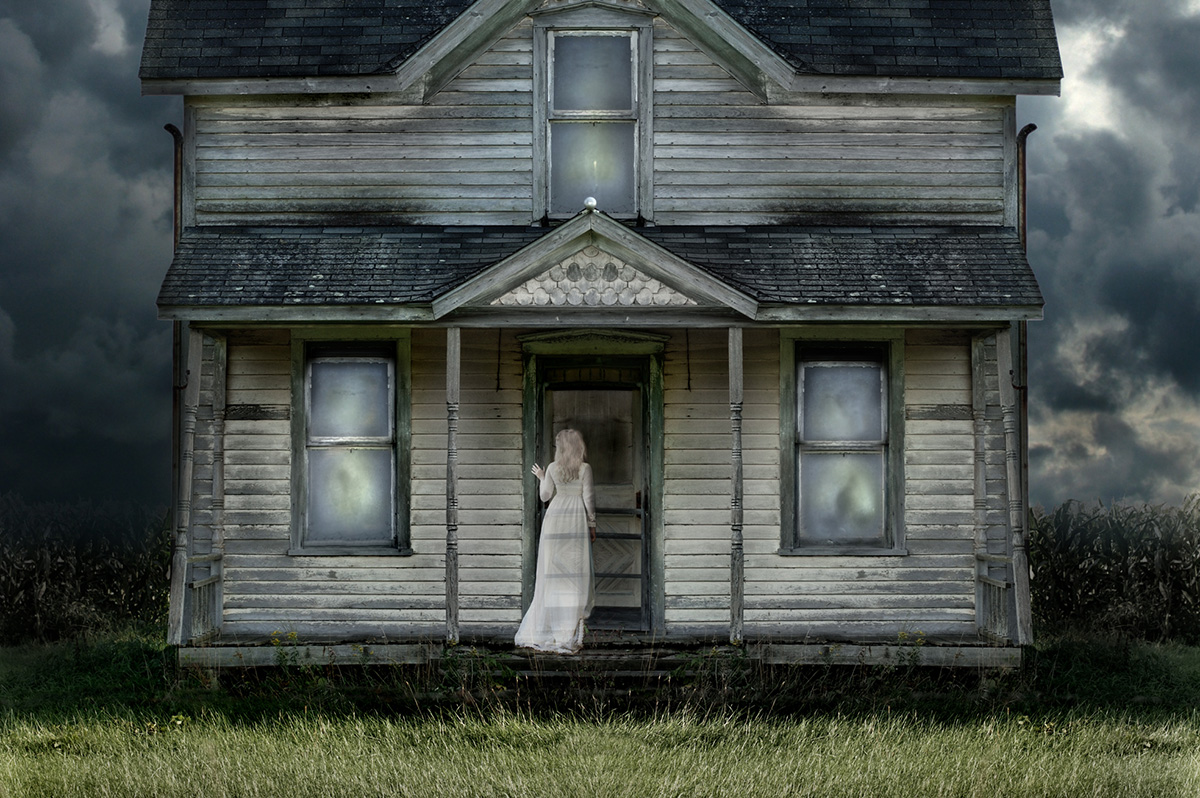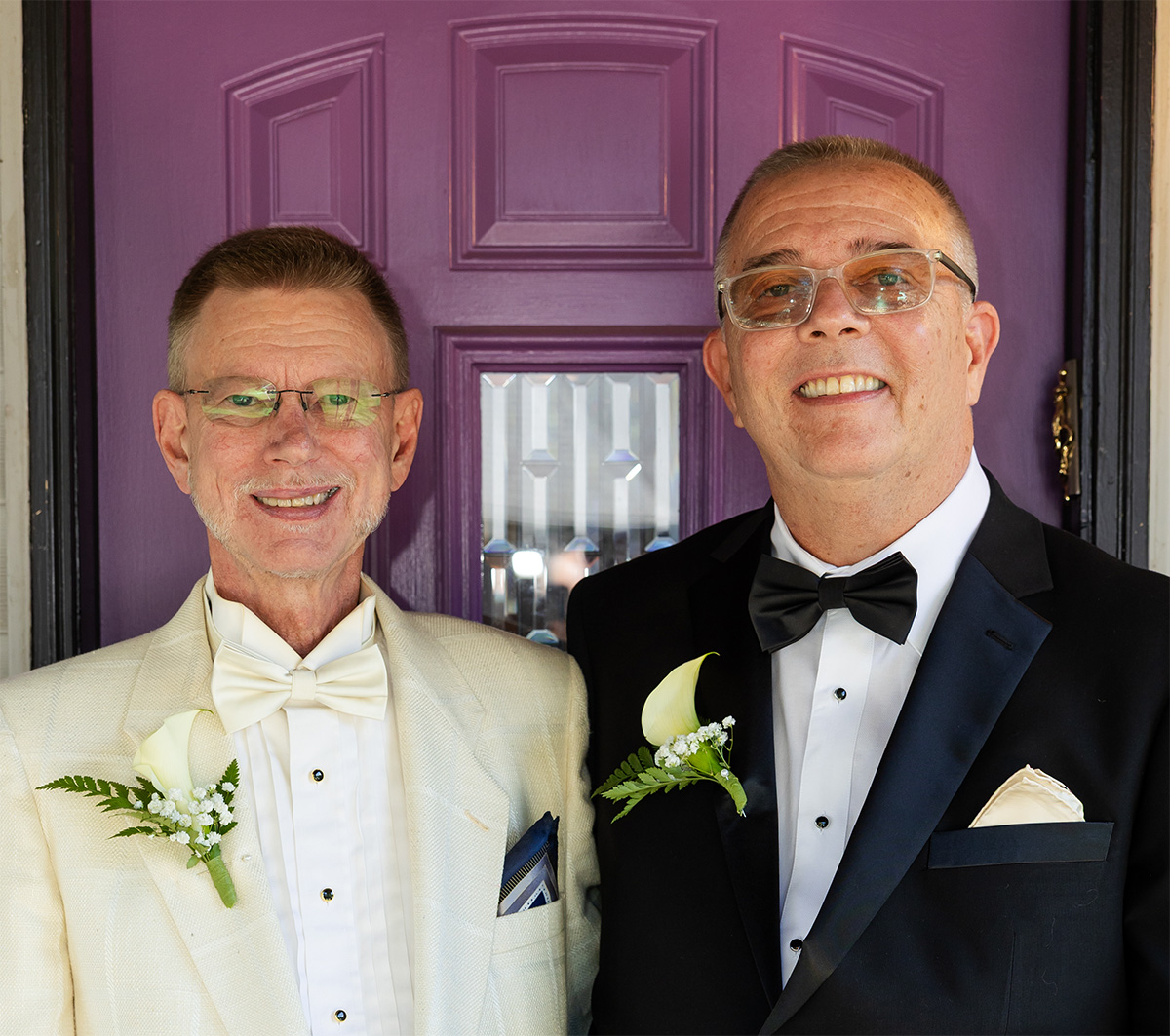Living
Young, gifted and gay
Out students at historically black colleges face unique challenges


Building relationships, transparency and creating resources are crucial to LGBTQ organizing on HBCU campuses.
By TRINICE McNALLY and ALLISON MARIE TURNER
The intersection of race, sexual orientation and gender identity is the everyday lived experience of LGBTQ students on Historically Black Colleges and Universities (HBCUs). These factors create unique challenges for students on these campuses and the campuses themselves.
These types of campuses are often overlooked when it comes to money and resources. As a movement, we continually fail in providing support toward minority-serving institutions, especially those in rural areas and the South. However, there has been growing visibility and progress at HBCUs and in recent years.
Campuses working to meet the intersectional needs of students include Bethune-Cookman University’s Gay-Straight Alliance, which has more than 100 members; Morehouse College’s LGBTQ course offering; Fayetteville State University’s LGBTQ center, making it the third HBCU to have one; and Virginia State University’s Lavender Graduation ceremony to recognize its commitment to LGBTQ graduates.
Thanks to the work of student leaders and staff at HBCUs, these campuses are increasing the visibility of and resources for LGBTQ students and their specific needs. This July, at Campus Pride’s Summer Leadership Academy, there were more than 30 student leaders and staff in attendance from various HBCUs. Through caucuses, workshops and conversations between students and advisors, a theme of the unique issues HBCU LGBTQ students face, as well as the unique solutions to these issues, emerged.
A majority of HBCUs were founded on religious principles, causing a conflict when that particular faith, or the mainstream interpretations of that faith in the black community, do not support LGBTQ people. LGBTQ students who attend HBCUs are often told they are going to hell or that they should repent to “pray the gay away.”
Additionally, the black community has suffered from stigma in regard to mental health for years. Historically, people of color don’t seek counseling and are deemed as “crazy” if seeking mental health professional help or suggested to “pray about it.” This combines with a history of pathologizing queerness, creating additional barriers for black LGBTQ students when they experience feelings of difference when it comes to their gender identity or sexual orientation.
People of color often feel as if we must choose between our ethnicity and sexual orientation or gender identity because we are often ridiculed in both as if we cannot co-exist. This often leaves us feeling isolated, ignored and marginalized. Communities of color, because they have been historically hyper-sexualized by white people, may choose not to share their sexual or gender identities for fear of “airing dirty laundry” and buying into untrue stereotypes of black people.
In order to successfully organize on HBCU campuses, there are several components that guarantee success, including relationship building, transparency and creating resources. These components allow HBCUs to address the unique issues their LGBTQ students face as multifaceted, intersectional people.
As LGBTQ and ally leaders, whether staff or student, building relationships is important. Due to the stigma and “taboo” effect of LGBTQ culture, some people don’t how to approach sexuality or gender identity. Building a relationship where people trust you is how you will gain campus support. You can have an LGBTQ organization that LGBTQ people of color don’t support if they don’t know who you truly are.
Students need to see a reflection of themselves. Not enough people of color are out on HBCU campuses. It is detrimental to youth of color, especially black men and transgender people, including non-binary people. Many people who can pass as straight or as cisgender choose not to be out publicly for safety reasons. Many professionals are closeted in communities of color, perpetuating the idea that expressing your true self is detrimental to the fight against racial oppression. Black LGBTQ youth don’t get to see proud, successful black people often because of this and miss out on role models they may need to live openly themselves.
Out of the 105 HBCUs is the United States, only three have resource centers versus the hundreds that predominantly white institutions have. Culturally there are so many barriers that HBCU campuses face that prohibit them from being exposed to possible resources. Unfortunately, HBCUs are faced with financial crisis and the ones that are running are trying to keep their schools accredited and open.
HBCUs are often ridiculed, but produce the highest number of black graduates in the country. However, the lack of resources is dooming our culture for generations to come. HBCUs need resources when they receive pushback; they need financial support to assist with programming for LGBTQ student organizations. This increases visibility of LGBTQ students at HBCUs, allowing universities to better recognize and support these groups. HBCUs need organizations, companies and government officials to show them that they matter, so that those who are dedicated to this work don’t grow weary or tired before making that impact.
Trinice McNally is the Coordinator of Diversity Initiatives and Gay-Straight Alliance Advisor from Bethune-Cookman University in Daytona Beach, Fla. She is proud to be an openly queer woman working at a historically Black university. Allison Marie Turner is an alumnus of the University of North Carolina at Chapel Hill, where she studied journalism and mass communication and women’s and gender studies. She is a 2015 Programs and Communications Fellow for Campus Pride.
Real Estate
Real terrors of homeownership come from neglect, not ghosts
Mold, termites, frayed wires scarier than any poltergeist

Each October, we decorate our homes with cobwebs, skeletons, and flickering jack-o’-lanterns to create that spooky Halloween atmosphere. But for anyone who’s ever been through a home inspection there’s no need for fake scares. Homes can hide terrors that send chills down your spine any time of year. From ghostly noises in the attic to toxic monsters in the basement, here are some of the eeriest (but real) things inspectors and homeowners discover.
Every haunted house movie starts with a creepy basement, and in real life, it’s often just as menacing. Mold, mildew, and hidden water leaks lurk down there like invisible phantoms. At first, it’s just a musty smell — something you might brush off as “old house syndrome,” but soon enough, you realize those black or green patches creeping along the walls can be more sinister than any poltergeist.
Black mold (Stachybotrys chartarum) is particularly fearsome – it thrives in damp, dark places and can cause serious respiratory problems. It’s not just gross – it’s toxic and, while some types of mold can be easily cleaned up, removing black mold can cost more than an exorcism.
Have you ever heard strange buzzing or seen flickering lights that seem to move on their own? Before you call the Ghostbusters, call an electrician. Faulty wiring, outdated panels, and aluminum circuits from the mid-20th century are the true villains behind many mysterious house fires. Home inspectors can also find open junction boxes, frayed wires stuffed behind walls, or overloaded breaker panels that hum like a restless spirit.
Imagine an invisible specter floating through your home – something that’s been there since the 1950s, waiting for you to disturb it. That’s asbestos. Home inspectors dread discovering asbestos insulation around old boilers or wrapped around ductwork. It’s often lurking in popcorn ceilings, floor tiles, and even wall plaster. You can’t see it, smell it, or feel it—but inhaling those microscopic fibers can lead to serious illness decades later.
Lead pipes, once thought to be durable and reliable, are like the vampires of your water system – quietly poisoning what sustains you. The results of a lead test can be chilling: even a small amount of lead exposure is dangerous, particularly for children.
And it’s not just pipes – lead paint is another problem that refuses to die. You might find it sealed beneath layers of newer paint, biding its time until it chips or flakes away. This is why, when selling a property built prior to 1978, homeowners must disclose any knowledge of lead paint in the home and provide any records they may have of its presence or abatement.
Scratching in the walls. Tiny footsteps overhead. Droppings in the attic. It’s not a poltergeist – it’s pests. Termites, rats, bats, carpenter ants, and even raccoons can do more damage than any ghost ever could.
Termites are the silent assassins of the home world, chewing through beams and joists until the structure itself starts to sag. Rats and mice leave behind droppings that can spread disease and contaminate food. Bats are federally protected, meaning your haunted attic guests can’t just be evicted without proper precautions. And I once had a raccoon give birth in my chimney flue; my dogs went crazy.
Ever step into a home and feel the floors tilt under your feet? That’s no ghostly illusion – it’s the foundation shifting beneath you. Cracked walls, doors that won’t close, and windows that rattle in their frames are the architectural equivalent of a horror movie scream.
Foundation damage can come from settling soil, poor drainage, or tree roots rising from under the structure. In extreme cases, inspectors find entire crawl spaces flooded, joists eaten by rot, or support beams cracked like brittle bones. Repair costs can be monstrous – and if left unchecked, the whole house could become a haunted ruin.
Some homes hold more than just physical scares. Behind the drywall or under the floorboards, inspectors may uncover personal relics – old letters, photographs, even hidden safes or forgotten rooms. Occasionally, however, there are stranger finds: jars of preserved “specimens,” taxidermy gone wrong, or mysterious symbols scrawled in attic spaces.
These discoveries tell stories of the people who lived there before, sometimes fascinating, sometimes chilling, but they all add to the eerie charm of an old home, reminding us that every house has a history — and some histories don’t like to stay buried.
So, while haunted houses may be a Halloween fantasy, the real terrors in homeownership come from neglect, not ghosts. Regular inspections, good maintenance, and modern updates are the garlic and holy water that turn a trick of a home into a treat.
Valerie M. Blake is a licensed associate broker in D.C., Maryland, and Virginia with RLAH @properties. Call or text her at 202-246-8602, email her via DCHomeQuest.com, or follow her on Facebook at TheRealst8ofAffairs.
Advice
Sexual desire is waning, should we open our relationship?
Couple faces difficult choices after seven years

Dear Michael,
When I met my husband seven years ago, I was super attracted to him and we had a really hot sex life.
That feeling has been waning for a while and now I am just not feeling it.
I know that people get older, gain weight, get less attractive over time but that’s not the case here. Ben is as good looking as ever. But I have little desire to have sex with him.
It bothers me that I don’t really want to have sex with the guy I love and want to spend the rest of my life with.
Is this why everyone else I know has an open relationship? Is there something I can do to want to have sex with my husband again?
This is causing major problems in my marriage. I don’t initiate anymore and half the time I find an excuse to not have sex when Ben initiates. He knows something is up but I usually blame it on work stress or not feeling well. I don’t want to hurt his feelings.
Aside from this, I love Ben and we have a lot of fun together. We’re very close, talk about all sorts of stuff, but not this.
Michael replies:
Pretty much everyone in a long-term relationship has to deal with decreased desire at some point.
Sex changes after you’ve been with your partner for a while. Sex is not going to be as easy, hot, and irresistible as it was at the beginning of the relationship. Newness generates a lot of the sexual heat at the outset of a relationship, and when the newness is gone, you don’t easily feel the same sizzling excitement that you felt when you first met.
Unfortunately, the kind of sex that people have at the beginning of a relationship is totally glorified in our culture as the gold standard of sex.
I say “unfortunately” because it’s not possible to consistently have the hot sex of a new relationship, ongoing, with a long-term partner. So if you think that is the best or only kind of sex to have, you will be contemptuous of anything else, and you will be disappointed in your sex life with your partner as time marches on.
But the sizzling sex people have at the start of a relationship is just one way to have sex. If you are willing to be imaginative, and are open to change, there are many other kinds of sex that can be wonderful.
How about sex for emotional connection? Sex for physical closeness? Sex for romance? Sex to celebrate just being together?
So, consider changing (not lowering!) your expectations. Rather than sulking or moping that you don’t want to spontaneously jump Ben’s bones, be open to having sex with your husband that is based more on your relationship and on your love for each other.
Now, here’s a whole other angle to consider: While the excitement of a new partner often fades, there are still ways to generate excitement and passion in a long-term relationship by taking risks and revealing yourself more deeply. Stick with me and I’ll explain.
- You haven’t said anything to Ben about your waning interest. I encourage you to re-think this. You would be much better positioned to tackle this issue collaboratively. Not talking about how stuck you feel is likely to deepen your feeling of shame and fear that something is wrong. Speaking with Ben about what is actually a fairly common couples’ issue could be a relief.
- Ironic as this may seem, the closer two people are, the less comfortable they may be being frankly sexual with each other. Clients often tell me that they are more comfortable expressing their real desires to someone they hardly know (or don’t know at all) than to their significant other. For one thing, the more your partner means to you, the more you may fear rejection if you reveal sexual feelings and desires that might upset or even shock your partner. For another, as couples get closer, sex may start to feel like too much closeness, and avoiding sex may be a way to create some space.
Not speaking up about what is important keeps you distant from your partner and drains your relationship of vitality. A powerful antidote to this: work toward becoming a person who can take risks, tolerate discomfort and uncertainty, and be able stand on your own when you don’t get your partner’s validation.
Talking with Ben, whether it’s about your lack of spontaneous desire for sex, or about sexual interests you may be keeping from him for fear of judgment, would involve your making uncomfortable moves that might lead to Ben’s judgment or even rejection. But doing so would also, of course, allow the possibility of more happening between you sexually. It would also let Ben know you better, thereby deepening the level of intimacy in your relationship. Making these moves could also be inherently exciting, which —guess what—could help to shake you out of your sexual doldrums and bring more passion and life into your relationship.
Similarly, you might start initiating. Even if you’re afraid it won’t go well and even if you’re not feeling it. That is the only way you are going to figure out how to have satisfying long-term sex. Take the need for an erection or orgasm off the table. Sex with your partner should not be a performance. Go for closeness, connection, and what feels good. And challenge yourself to go places that you are uncomfortable about going.
If any of this intrigues you, “Passionate Marriage” and “Intimacy and Desire,” both by David Schnarch, explore how your sexual connection can deepen over time in a long-term relationship.
Finally, with regard to your considering an open relationship as a remedy: Do you think that would enhance the sexual connection between you and Ben?
Michael Radkowsky, Psy.D. is a licensed psychologist who works with couples and individuals in D.C. He can be found online at michaelradkowsky.com. All identifying information has been changed for reasons of confidentiality. Have a question? Send it to [email protected].
Wedding Announcement
Douglas M. Haller and Timothy H. Longnecker wed in Detroit, Michigan
Couple weds in Detroit, Michigan

Douglas M. Haller and Timothy H. Longnecker were married on September 15, 2025 in Detroit’s gay-welcoming suburb Ferndale after 11 years as domestic partners in Midtown Detroit. Julia Music, coordinator of LGBTQ Pride celebrations in Ferndale, served as officiant.
The couple sang stanzas of the 1927 song “Side By Side” as their vows, concluding with an AI Gay Wedding Pledge: “to be Allies pursuing happiness, equality and shared dreams.”
The couples’ families hail from Detroit’s Old Redford neighborhood; Douglas is Irish and French-Canadian, Timothy is German and English. DNA testing confirmed to the couple that each shares substantial ancestry from Ostrobothnia, Finland.
Douglas began his advocacy as a gay cultural and political activist in 1971 by coming out in the disco dance scene of Detroit’s Gay Palmer Park neighborhood. In Washington, D.C. after 1974, he was an interior designer at Georgetown’s Little Caledonia boutique. Douglas became the co-owner of Hermes Antiques with Helen Coutts, a retired English Literature teacher from Redford H.S. On S St. at Connecticut Ave., D.C.’s first Pride celebrations were held in front of their shop, alongside Lambda Rising bookstore. Following victimization in an anti-gay hate attack, Douglas became the public awareness coordinator of the Gay Activists Alliance, and was the principal organizer of its Anita Bryant demonstration at Dupont Circle.
Returning to Detroit in 1979, Douglas achieved an M.A. in Ancient History & Archival Administration at Wayne State University (WSU), studying under Finley Hooper & Philip Mason; his Master’s Essay re: an American Labor Movement cartoonist, utilizing the Walter Reuther Library’s archives. His WSU 1973 B.A. included American Political/ Diplomatic History, & Interdisciplinary Studies. During 1979-82 he was Information Officer of ASP (Assoc. of Suburban People)— Metro Detroit’s largest gay and lesbian social and political organization.
Douglas relocated toSan Francisco in 1982. He was Curator of Photographs at California Historical Society Libraries in Pacific Heights and Los Angeles. Living in the Mission & Haight, he was active in Castro and South-of-Market gay life, just as the HIV/AIDS epidemic first appeared.
In 1986 Douglas relocated to Philadelphia, as Head Archivist of the University of Pennsylvania Museum of Archaeology/Anthropology; authoring an illustrated book on Maison Bonfils, 19th-century French photographers of the Near East. Douglas was Founding Archivist of Penguin Place, now Philadelphia’s William Way LGBT+ Community Center. He became a Charter Member, Academy of Certified Archivists; and Founding Member, Lesbian/ Gay Archives Roundtable, Soc. of American Archivists (Chicago).
Returning to WSU’s Reuther Library (1998), Douglas was Coordinator of Audiovisual Collections, & History of Photography Instructor. Following 9/11 Attacks (2001), he relocated to New Orleans as Head Curator of Louisiana State Museums. Later owning the Gay-welcoming Creole Inn B&B in the Marigny (nr the French Quarter), with his finger on the pulse of Nawlins’ Gaylife—until Hurricane Katrina (2005). GLBT+ neighborhoods weren’t inundated—becoming lively islands amidst destruction. Douglas returned to Detroit in 2008 as caregiver for his mother, Jeanette Kalahar (Haller) Marchand, formerly a radio singer in 1940s Detroit. He met Timothy in 2014.
Timothy achieved a 1991 MBA in Finance & 1985 BS in Management Information Systems from the Univ. of Michigan-Ann Arbor. During 30 years, he held Information Technology & Automotive Business positions in Metro Detroit & LA, including Partner at Deloitte & Touche, Ford Motor & IBM. As a Consultant, his work involved extensive travel in North America, Europe & Asia. He has two married daughters from a previous marriage, a Pediatric Cardiology Nurse Practitioner & a Recruiting Executive for Automotive Technology clients, both living in Metro Detroit. As their final project before retirement, Timothy & Douglas worked as Archivist & Technology Consultant for Detroit educators Harriet (Choreographer) & Irving (Sculptor) Berg. Harriet acted as a godmother during their early relationship & they assisted in caregiving during her final years.
Timothy and Douglas spend their retirement in a 1905 apartment near the Detroit Institute of Arts’ exhibits, films and concerts, enjoying ethnic restaurants, and traveling. In 2025 they went by train to experience the “First Homosexuals 1869-1939” exhibition in Chicago. The curator of the exhibition, Jonathan Katz, 1976 book “Gay American History”, inspired Douglas to become a gay archivist.
-

 District of Columbia2 days ago
District of Columbia2 days ago‘Sandwich guy’ not guilty in assault case
-

 Sports3 days ago
Sports3 days agoGay speedskater racing toward a more inclusive future in sports
-

 Celebrity News5 days ago
Celebrity News5 days agoJonathan Bailey is People’s first openly gay ‘Sexiest Man Alive’
-

 Michigan4 days ago
Michigan4 days agoFBI thwarts Halloween terror plot targeting Mich. LGBTQ bars




















